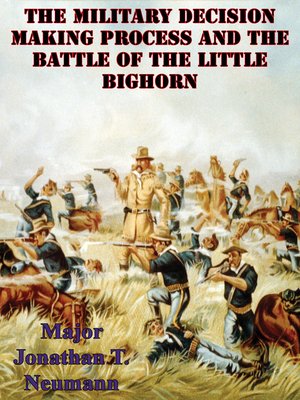The Military Decision Making Process and the Battle of the Little Bighorn
ebook
By Major Jonathan T. Neumann U.S. Army

Sign up to save your library
With an OverDrive account, you can save your favorite libraries for at-a-glance information about availability. Find out more about OverDrive accounts.
Find this title in Libby, the library reading app by OverDrive.



Search for a digital library with this title
Title found at these libraries:
| Library Name | Distance |
|---|---|
| Loading... |
Based on his background, education, training, and the information available at the time of his attack, Lieutenant Colonel George Armstrong Custer made good decisions as he lead the 7th Cavalry in its defeat at the Little Bighorn. Custer received the standard pre-commissioning education that West Point used to mold all future Army leaders. That education served him well in the Civil War where he enjoyed tactical success and a meteoric rise to fame and high rank. Following that conventional conflict, Custer entered into world of irregular warfare and voluntary forces. His defeat at the Little Bighorn ended 10 years of development as an unconventional warrior. Despite the common perception that his decisions invited disaster, by using the current Military Decision Making Process, and the intelligence available to him professionals of today can recreate the command decisions he made that day in June 1876 and possibly conclude that they were not to blame for the defeat. Custer's military decisions are very similar to those a current leader would make using current military decision making doctrine.







